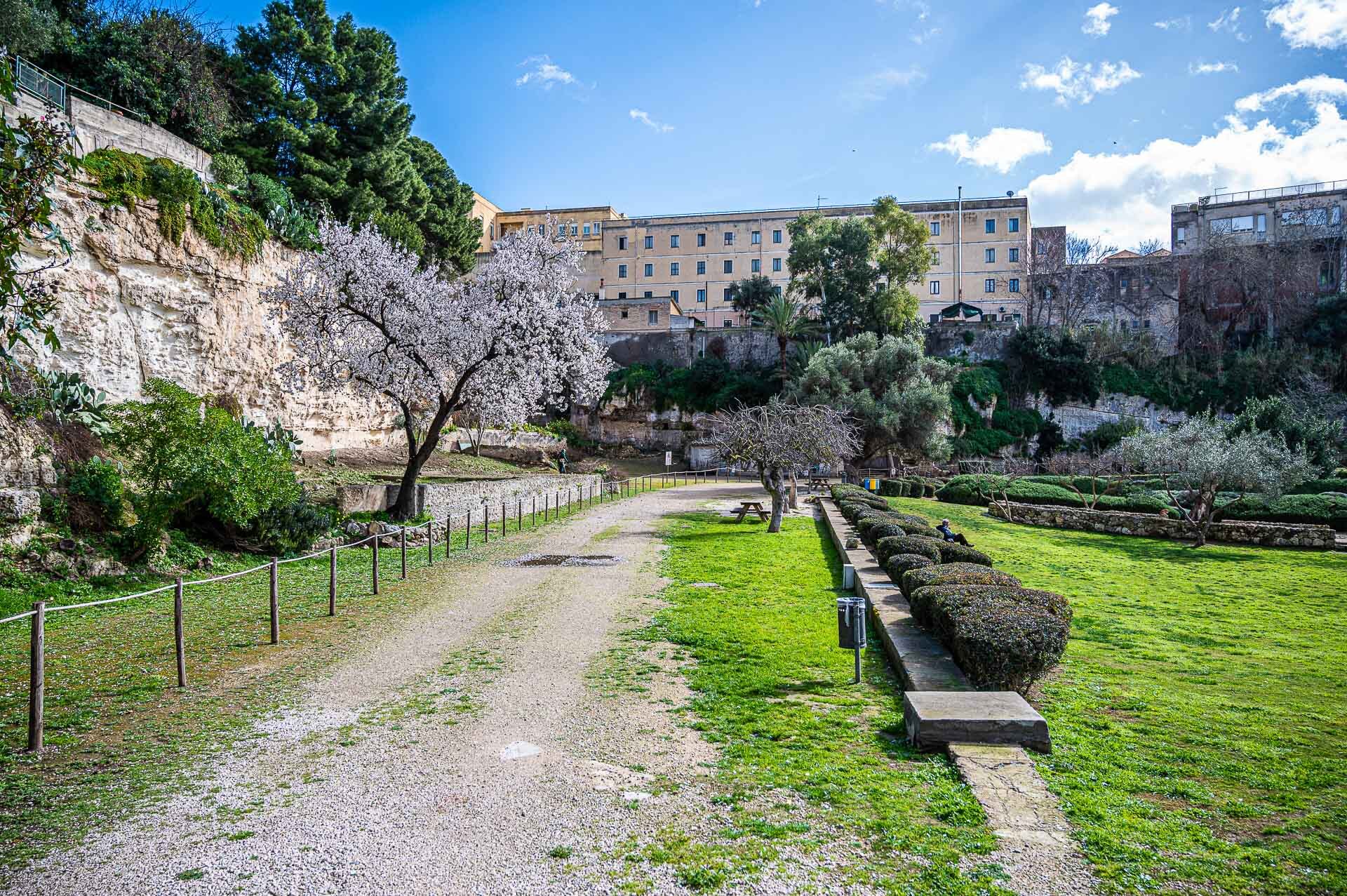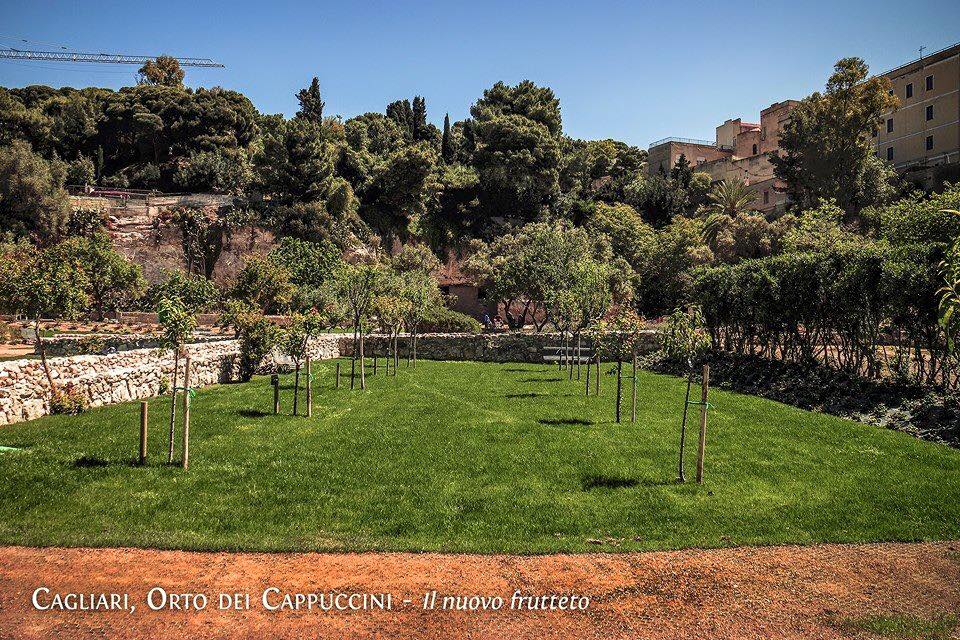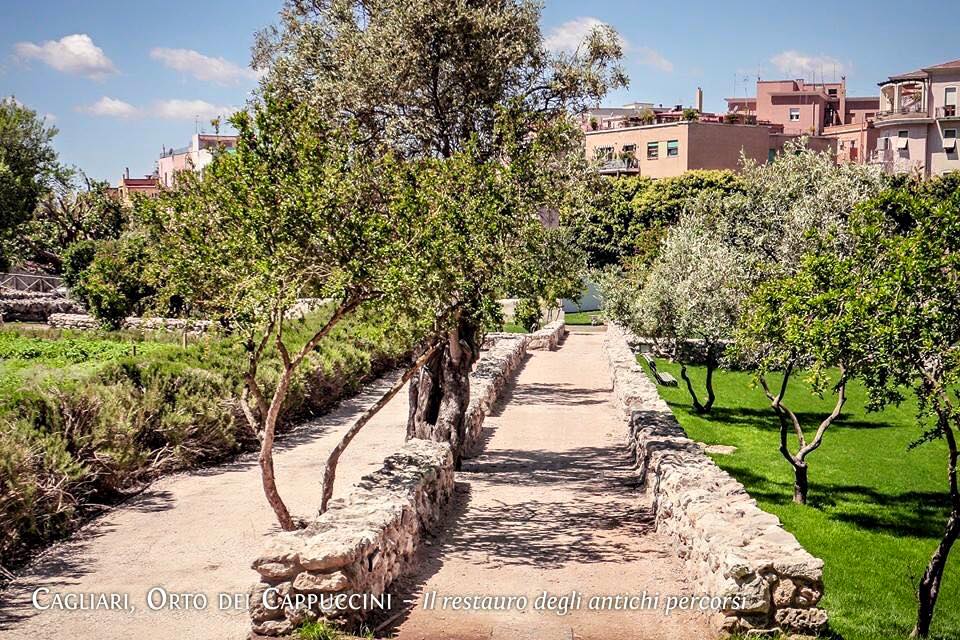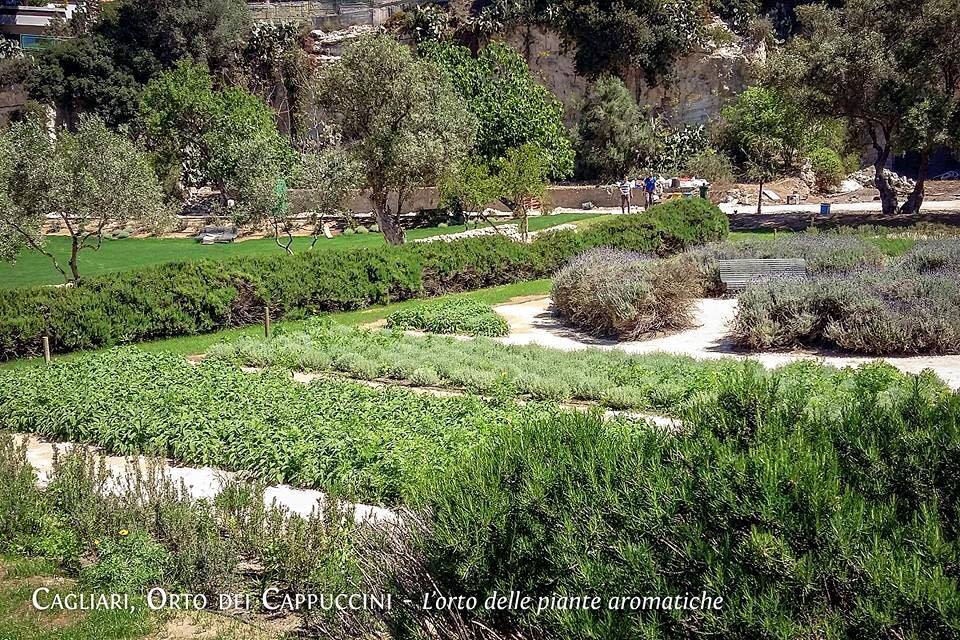The garden of the Capuchins friars was built in 1595 on a hill on the west side of the Roman Amphitheatre . The Convent of the Friars had a vast tract of land used as a garden for the cultivation of medicinal plants, in which there were some ancient cisterns of the Roman Period.
From Vico I Merello there is the access to the vast area called the "Garden of the Capuchins". In 1595, the Capuchins had founded on the hill to the west of the Amphitheatre their first convent in Sardinia, provided whith a large land used as a vegetable garden, and incorporating some ancient cisterns in their lot. The monastery grew rapidly, considering that in 1649 it included not less than 65 cells for the monks, in addition to the kitchen and the refectory. Such a rapid development of the convent, with the presence of a woolen mill, an infirmary and a large garden for the cultivation of medicinal plants, was made ​​possible only thanks to the availability of a large amount of water, especially guaranteed by the presence of a cistern into which, thanks to a complex work of channeling, rain water flowed. Capuchin Father Giorgio Aleo, a famous author of "Chronological History of Sardinia" relates a story on Cagliari plague of 1656, which probably refers to the cistern of the Garden of the Capuchins. The Aleo writes that in the last days of May 1656 the mortality in Cagliari became so high, that there were not grave-diggers enough to bury the dead. Faced with a growing number of unburied corpses, the magistrate health then decided to bury the dead in wells and cisterns and the dead in Castello quarter ended in an old cistern close to the Capuchins.
In the garden of the Capuchins, now owned by the city, there are several monumental cisterns dug into the limestone rock for a long time attributed to the Punic period. However these are instead quarries of building blocks opened perhaps in the I-II century AD, for the construction of the nearby Roman amphitheater. They were used as tanks at a later time, once waterproofed with earthenware (a lime plaster mixed with shredded pieces). The largest could hold up to one million liters of rainwater coming from the amphitheater through a long underground tunnel still viable. Thanks to various exploration carried out in 1997 by the Speleological Group Specus through the cavity, it was found that in ancient times the cave suffered a further readjustment in old prison, as evidenced by the numerous metal rings observable along the walls intended for fastening the chains. At one of these was discovered an important early Christian graffito, perhaps dating back to the early 4th century AD. This would be, according to a hypothesis of a symbolic image of Navicula Petri, the ship of the Church, with the tree of sailing consisting of a monogrammatic cross and on the deck the twelve Apostles, "fishers of men", schematically represented throwing the nets. The author should probably be identified in an unknown Christian martyr, detained before being killed, perhaps in the games of the amphitheatre.
Orto dei Cappuccini
Orto dei Cappuccini
Viale Merello, 59
City
CagliariAdd new review
Your review will be visible after approval by the editors
To post a review you must be an authenticated user.
Log in with Social Login



